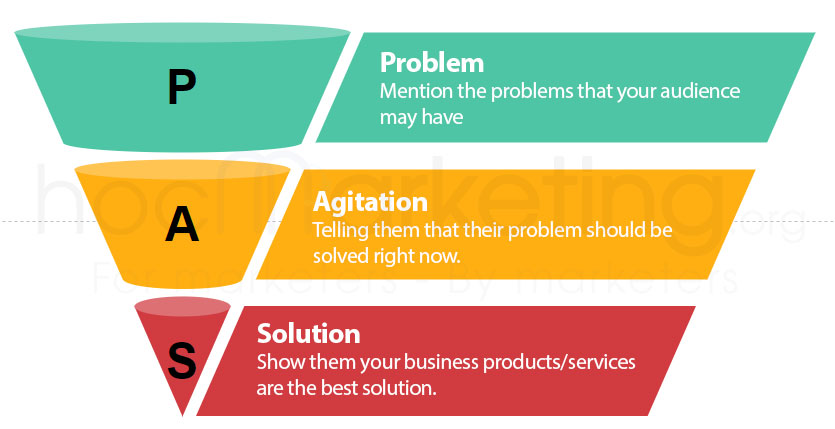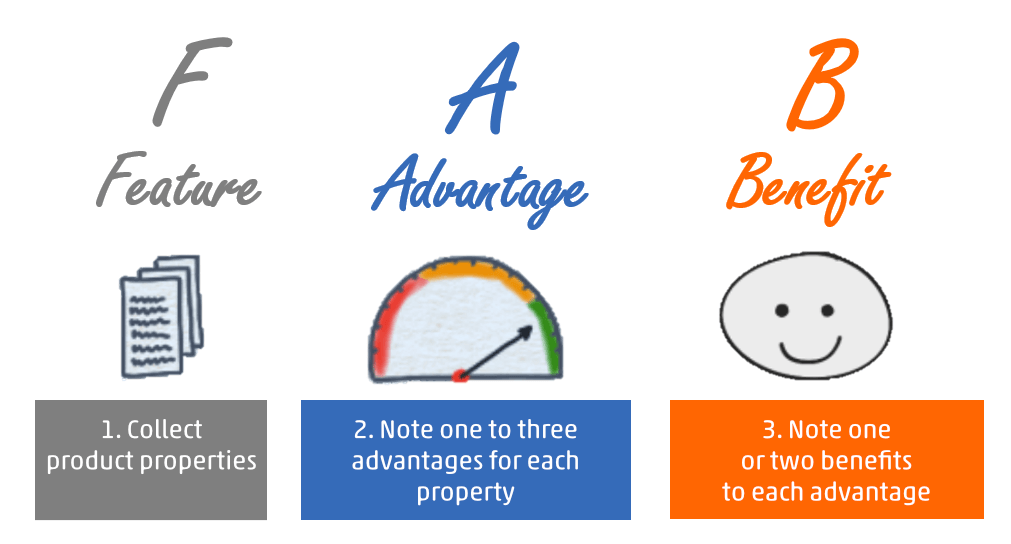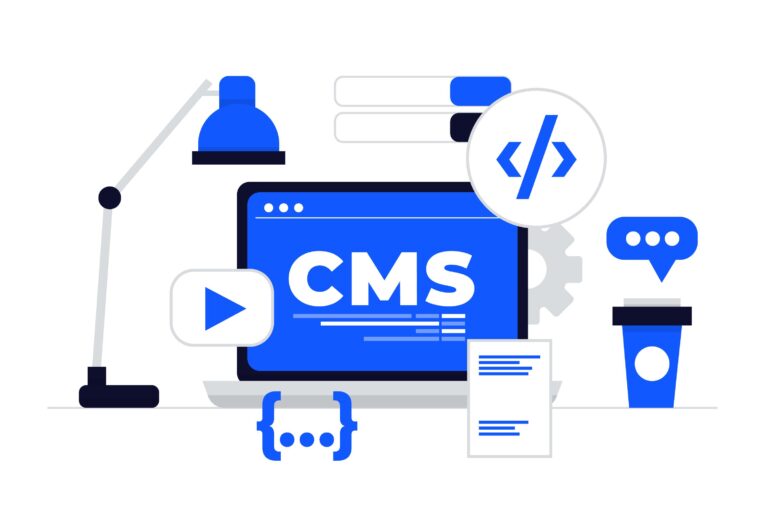This Copywriting Mistake Could Be Costing You Big Time…
When you walk into a store, do you respond better to a salesperson who talks on and on about product specifications, or one who understands your needs and explains how the product can solve your problems?
Effective copywriting essentially is like that salesperson that listens to you and gives you what you need and at times can predict your needs and point you in the right direction.
For example:
Instead of: “Our revolutionary cleaning solution delivers 99.9% germ elimination!”
Try: “Tired of cleaning that never seems to last? Our revolutionary cleaning solution eliminates 99.9% of germs, leaving your home sparkling clean and germ-free, so you can spend less time cleaning and more time living.”
See the difference? The first example focuses on the feature alone (germ elimination) but doesn’t connect with the audience’s emotions or needs. The second example speaks directly to the customer’s pain point (constant cleaning) and highlights the benefit (more time for living).
You might have a brilliant offering, but if your copywriting isn’t on point, it turns customers away from the brand. Here are few key aspects to keep in mind when copywriting:
- Speak to Pain Points: Identify the challenges your target audience faces and use your copy to address them directly.
- Highlight Benefits, Not Features: Don’t just list features; explain how those features translate into tangible benefits for your customers.
- Use Emotional Triggers: People buy based on emotions. Use language that taps into their desires, fears, and aspirations.
- Create a Conversation: Write in a conversational tone that feels genuine and relatable.
By shifting your focus to your target audience and their needs, you can craft compelling copy that resonates, builds trust, and ultimately converts into sales.
But how do you go about writing such a copy?
We don’t really need to reinvent the wheel to write a copy and there are several frameworks already that can be adapted. Here are few:
The PAS Framework:
Problem, Agitate, Solution frame work is a powerful framework. PAS focuses on identifying problems and offering solutions. However, in today’s competitive landscape, simply highlighting pain points isn’t enough. To truly capture attention and drive action, we need to tap into a fundamental human motivator: the fear of loss. That’s where the agitation comes into picture, showing what they could LOSE without a solution.

Here is how to write copies using a PAS framwork:
- Grab Attention:
- Start by sparking a question or highlighting a common pain point your audience faces.
- For example: “Are you tired of feeling stuck with the same problems? Frustrated that your current solutions just aren’t cutting it?”
- Introduce the Problem (with a Twist):
- Instead of simply stating the problem, paint a picture of the negative consequences if it’s not addressed.
- “Do you ever feel like you’re constantly chasing your tail, trying to fix the same issues over and over? This can lead to lost time, wasted resources, and ultimately, missed opportunities.”
- Agitate the Problem (Dial Up the Loss):
- This is where you crank up the heat. Don’t shy away from using strong language to emphasize the potential negative outcomes.
- “Imagine the impact on your business if these problems persist. Are you risking falling behind competitors? Could this lead to frustrated customers and lost sales?”
- Frame the problem not just as an inconvenience, but as a potential threat to their success.
- Introduce the Solution (PAS in Action):
- Here’s where you transition smoothly by offering a beacon of hope.
- “This is where the PAS framework comes in. By identifying these problems, truly understanding the potential losses, and then presenting a clear solution, you can turn frustration into action.”
- Emphasize the Benefits (Focus on Gaining):
- Don’t forget to showcase the positive outcomes of using the PAS framework.
- “With PAS, you’ll not only avoid potential losses, but also unlock a world of possibilities. Imagine increased efficiency, happier customers, and achieving your goals faster.”
- Call to Action:
- End with a clear call to action, encouraging them to learn more about the PAS framework or how you can help them implement it.
Let’s see an example now. Assume that we’re marketing a new running shoe designed for comfort and long-distance performance.
Without the PAS Framework
Introducing the CloudRunner – Your New Favorite Running Shoe. The CloudRunner is designed for the long haul. With its lightweight construction and breathable mesh upper, you’ll stay cool and comfortable even on your toughest runs. The plush cushioning provides superior shock absorption for a smooth, enjoyable ride.
Using the PAS Framework
- Headline: Tired of achy feet and blisters ruining your long runs?
- (Problem): You push yourself to the limit, but your shoes don’t keep up. Blisters form, your feet ache, and your runs get cut short. You deserve footwear that can match your ambition.
- (Agitation): Imagine running mile after mile without the distracting pain. That finish line that always felt slightly out of reach starts to look a lot closer.
- (Solution): Introducing the CloudRunner, the shoe built for distance. Ultra-plush cushioning lets you log those extra miles, the breathable mesh keeps you cool, and the fit feels custom-made for your feet. Leave the foot pain behind and rediscover the joy of the long run.
Why PAS Works?
The PAS framework is effective because:
- Connects Emotionally: It starts with the customer’s frustrations and desires, building a stronger emotional connection.
- Empathy Driven: By focusing on the problem and agitating it, you show you understand what the customer is going through.
- Solution-Oriented: Your product or service isn’t just presented as a thing, it’s the answer the customer has been looking for.
FAB (Features, Advantages, Benefits):
The FAB framework is a cornerstone of marketing and sales communication. It helps us clearly explain what a product or service does (Features), why it works (Advantages), and ultimately, how it benefits the customer (Benefits). Focus on describing product’s features, how they are better than other products, and the actual benefits customers experience.

Here’s how you can implement the FAB framework effectively:
1. Define Compelling Features:
- Start by listing all the features your product or service offers.
- Focus on what’s unique, not generic capabilities.
- Ask yourself: “What sets us apart from the competition?”
2. Translate Features into Advantages:
- Don’t just list features; explain how they benefit the customer.
- Focus on solving their problems and overcoming challenges.
- Use strong action verbs to highlight the positive impact of each feature.
3. Emphasize Tangible Benefits:
- This is where you connect the dots and show the real value proposition.
- Translate advantages into specific outcomes that improve the customer’s life.
- Use clear, concise language that paints a picture of a better future with your product/service.
Tips for Effective FAB Implementation:
- Focus on the Customer: Tailor your message to your target audience’s specific needs and desires.
- Use Real-World Examples: Quantify the benefits whenever possible.
- Keep it Concise: Your message should be clear and easy to understand.
- End with a Call to Action: Tell your audience what you want them to do next.
Let’s check out how the framework works using a productivity app promotion designed to help busy professionals manage their time more efficiently.
Without the FAB Framework
Introducing FocusMate – The Productivity App: FocusMate is a powerful tool that helps you stay on task. Set daily goals, organize projects, manage your calendar, and eliminate distractions.
Using the FAB Framework
- Headline: Overwhelmed by your to-do list? Reclaim your time.
- (Feature): FocusMate provides a structured workspace with customizable timers, project breakdowns, and a distraction blocker for deep focus.
- (Advantage): Finish tasks faster, meet deadlines with less stress, reduce procrastination, and feel a renewed sense of control over your schedule.
- (Benefit): With FocusMate, you’ll transform those overwhelming to-do lists into a sense of accomplishment, freeing up mental space and time for the things that truly matter.
Why FAB Works?
The FAB framework is effective because it:
- Customer-Focused: Instead of just listing features, it links them directly to benefits the customer cares about.
- Bridges the Gap: It demonstrates the logical progression from “what the product has” to “how it improves your life.”
- Aspirational: It focuses on the desirable outcome, not just the list of tools.
AIDA (Attention, Interest, Desire, Action):
The AIDA model – Attention, Interest, Desire, Action – is a classic framework for crafting marketing messages. It guides us through the customer journey, ensuring our communication captures attention, sparks interest, ignites desire, and ultimately compels action.
Simply grabbing attention and generating interest isn’t enough to guarantee a sale. Today’s consumers are bombarded with messages, so we need to go beyond basic awareness and truly connect with their desires and motivations.

Here’s how you can elevate your AIDA strategy for maximum impact:
- Attention: From Intrigue to Urgency
- Move beyond the ordinary to spark curiosity. Don’t just highlight your product; tap into current events, trending topics, or emotional triggers that resonate with your audience.
- For example: Instead of a generic ad for a fitness tracker, create a campaign showcasing the frustration of feeling sluggish and out of shape. This taps into the desire for a healthier lifestyle and sets the stage for your product as the solution.
- Interest: Don’t Just Inform, Engage
- Don’t settle for dry product descriptions. Use storytelling, interactive elements, or even a touch of humor to pique interest and encourage deeper exploration.
- For example: Develop a quiz that helps users identify their fitness goals, then connect those goals to specific features of your fitness tracker. This interactive approach fosters engagement and personalizes the customer journey.
- Desire: Beyond Features, Highlight Outcomes
- Focus on the emotional connection and the positive transformation your product offers. Don’t just list features; showcase the desired outcomes – feeling confident, achieving goals, or living a healthier life.
- For example: Instead of listing technical specs of the fitness tracker, showcase real people using the product to achieve their fitness goals. This creates an emotional connection and fuels the desire to replicate their success.
- Action: From Consideration to Conversion
- Make the call to action clear, compelling, and time-sensitive. Offer limited-time discounts, early access, or bonus features to create a sense of urgency and encourage immediate action.
- For example: Instead of a generic “Buy Now” button, offer a discount for first-time users or a free trial with a limited window.
Let’s look at how the AIDA model can be applied. Let’s say we’re marketing a subscription box service that delivers curated self-care items.
Without the AIDA Model
Treat Yourself with the BlissBox. BlissBox is a monthly subscription box filled with relaxing bath products, aromatherapy items, cozy socks, and other goodies to help you unwind. Treat yourself or a loved one to a little extra self-care.
Using the AIDA Model
- Headline: Stressed out? You deserve a moment of pure bliss.
- (Attention): The daily grind wears you down. Between work, errands, and responsibilities, it’s tough to find time for yourself.
- (Interest): Imagine a box filled with luxurious surprises arriving at your doorstep each month – a reminder to slow down and recharge.
- (Desire): Picture yourself soaking in a soothing bath, surrounded by calming scents, with a cozy treat waiting for afterward. That relaxation can be yours.
- (Action): Subscribe to BlissBox today and transform your stress into serenity.
Why AIDA Works?
The AIDA model is a classic copywriting tool because it:
- Follows a Psychological Path: Mirrors the natural thought process of a potential customer, from awareness to action.
- Customer-Driven: Keeps the focus on the reader’s needs and desires, rather than just product features.
- Builds Momentum: It guides the reader through an emotional journey that makes them more receptive to taking the final purchasing step.
BAB (Before-After Bridge):
The BAB framework, also known as the Before-After-Bridge formula, is a powerful tool for storytelling in marketing and communication. It allows you to connect with your audience on an emotional level, highlight the value you offer, and ultimately drive action.

Here’s a breakdown of the framework and how to implement it effectively:
1. Before: Paint a Picture of the Problem
- Start by establishing the context.
- Who is your target audience? What are their common struggles, frustrations, or pain points?
- Use vivid language and storytelling to paint a picture of their current “before” state.
- Example: “Are you tired of feeling overwhelmed by a never-ending to-do list? Do you constantly feel like you’re falling behind and can never catch up?”
2. After: Showcase the Desired Outcome
- Shift the focus to a future state transformed by your product or service.
- Describe the ideal “after” scenario – a world where their problems are solved and their lives are improved.
- Use positive and aspirational language to evoke an emotional response.
- Example: “Imagine a world where you feel organized and in control. You breeze through your tasks with ease, have time for the things you love, and achieve your goals efficiently.”
3. Bridge: Introduce Your Solution as the Path to Success
- This is where you connect the dots between the “before” and “after.”
- Introduce your product or service as the bridge that takes your audience from their current state to their desired outcome.
- Explain how your solution addresses their specific needs and challenges.
- Example: “This is where our productivity app comes in. With its easy-to-use features and intuitive interface, you can plan your day effectively, prioritize tasks, and eliminate distractions. Get organized, achieve more, and finally live the stress-free life you deserve.”
Additional Tips for a Powerful BAB Framework:
- Focus on Emotions: Evoke empathy by tapping into your audience’s feelings and frustrations in the “before” and the joy and relief of a transformed life in the “after.”
- Keep it Concise: Your story should be clear, engaging, and easy to understand.
- Use Strong Calls to Action: End your story with a clear call to action, encouraging your audience to learn more or take advantage of your offer.
Let’s break down the BAB framework using a noise-canceling headset marketing campaign designed for busy work environments.
Without the BAB Framework
Introducing QuietPro Headphones: QuietPro headphones use advanced noise cancellation technology to block out distractions. The comfortable design lets you wear them all day, and the long battery life keeps you focused without interruptions.
Using the BAB Framework
- Headline: Can’t concentrate? Drowning in office chatter and keyboard clicks?
- (Before): Every time you try to focus, distracting noises shatter your concentration. Important work gets delayed, stress levels rise, and by the end of the day, you’re mentally exhausted.
- (After): Imagine slipping on your QuietPro headphones and the world going silent. Deep focus becomes effortless, you power through tasks, and leave work feeling accomplished.
- (Bridge): QuietPro’s advanced noise cancellation technology creates your personal oasis of peace. It’s the tool you need to unlock your true productivity potential.
Why BAB Works?
The BAB framework works well because it:
- Empathy First: Acknowledges the reader’s struggles, creating an emotional connection.
- Transforms the Product: It transforms your solution from a mere product into the means of achieving a desirable transformation.
- Aspirational Focus: Keeps the spotlight on the positive outcome the reader craves.
Hope you could use one of these copywriting frameworks to truly outshine your copy.
Want deeper dives on such concepts? Check out:
- Our YouTube channel https://www.youtube.com/@RavaAI
- Check out Our website https://rava.ai/ for even more insights
- Subscribe to our newsletter for exclusive tips and analysis
- Check out this blog post to ramp up your SEO for the amazing content you just wrote!







